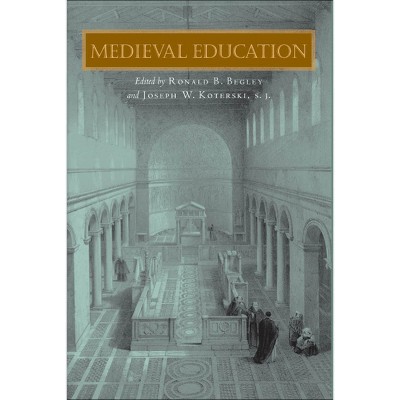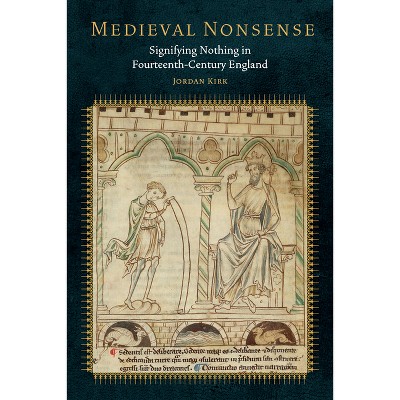The Roads to Hillbrow - (Polis: Fordham Urban Studies) by Ron Nerio & Jean Halley (Paperback)

$35.00 when purchased online
Target Online store #3991
About this item
Highlights
- This highly accessible portrayal of a post-apartheid neighborhood in transition analyzes the relationship between identity, migration, and place.
- About the Author: Ron Nerio (Author) Ron Nerio is a research programs director at the Central Office of the City University of New York and an adjunct lecturer of sociology at Fordham University.
- 320 Pages
- Political Science, Public Policy
- Series Name: Polis: Fordham Urban Studies
Description
About the Book
"This highly accessible portrayal of a post-apartheid neighborhood in transition analyzes the relationship between identity, migration, and place. Since it was founded in 1894, amidst Johannesburg's transformation from a mining town into the largest city in southern Africa, Hillbrow has been a community of migrants. As the "city of gold" accumulated wealth on the backs of migrant laborers from southern Africa, Jewish Eastern Europeans who had fled pogroms joined other Europeans and white South Africans in this emerging suburb. After World War II, Hillbrow became a landscape of high-rises that lured western and southern Europeans seeking prosperity in South Africa's booming economy. By the 1980s, Hillbrow housed some of the most vibrant and visible queer spaces on the continent while also attracting thousands of Indian and Black South Africans who defied apartheid laws to live near the city center. Filling the void for a book about migration within the Global South, The Roads to Hillbrow explores how one South African neighborhood transformed from a white suburb under apartheid into a "grey zone" during the 1970s and 1980s to become a "port of entry" for people from at least twenty-five African countries. The Roads to Hillbrow explores the diverse experiences of domestic and transnational migrants who have made their way to this South African community following war, economic dislocation, and the social trauma of apartheid. Authors Ron Nerio and Jean Halley weave sociology, history, memoir, and queer studies with stories drawn from more than 100 interviews. Topics cover the search for employment, options for housing, support for unaccompanied minors, possibilities for queer expression, the creation of safe parks for children, and the challenges of living without documents. Current residents of Hillbrow also discuss how they cope with inequality, xenophobia, high levels of crime, and the harsh economic impacts of COVID-19. Many of the book's interviewees arrived in Hillbrow seeking not only to gain better futures for themselves but also to support family members in rural parts of South Africa or in their countries of origin. Some immerse themselves in justice work, while others develop LGBTQ+ support networks, join religious and community groups, or engage in artistic expression. By emphasizing the disparate voices of migrants and people who work with migrants, this book shows how the people of Hillbrow form connections and adapt to adversity"--Book Synopsis
This highly accessible portrayal of a post-apartheid neighborhood in transition analyzes the relationship between identity, migration, and place.
Since it was founded in 1894, amidst Johannesburg's transformation from a mining town into the largest city in southern Africa, Hillbrow has been a community of migrants. As the "city of gold" accumulated wealth on the backs of migrant laborers from southern Africa, Jewish Eastern Europeans who had fled pogroms joined other Europeans and white South Africans in this emerging suburb. After World War II, Hillbrow became a landscape of high-rises that lured western and southern Europeans seeking prosperity in South Africa's booming economy. By the 1980s, Hillbrow housed some of the most vibrant and visible queer spaces on the continent while also attracting thousands of Indian and Black South Africans who defied apartheid laws to live near the city center. Filling the void for a book about migration within the Global South, The Roads to Hillbrow explores how one South African neighborhood transformed from a white suburb under apartheid into a "grey zone" during the 1970s and 1980s to become a "port of entry" for people from at least twenty-five African countries. The Roads to Hillbrow explores the diverse experiences of domestic and transnational migrants who have made their way to this South African community following war, economic dislocation, and the social trauma of apartheid. Authors Ron Nerio and Jean Halley weave sociology, history, memoir, and queer studies with stories drawn from more than 100 interviews. Topics cover the search for employment, options for housing, support for unaccompanied minors, possibilities for queer expression, the creation of safe parks for children, and the challenges of living without documents. Current residents of Hillbrow also discuss how they cope with inequality, xenophobia, high levels of crime, and the harsh economic impacts of COVID-19. Many of the book's interviewees arrived in Hillbrow seeking not only to gain better futures for themselves but also to support family members in rural parts of South Africa or in their countries of origin. Some immerse themselves in justice work, while others develop LGBTQ+ support networks, join religious and community groups, or engage in artistic expression. By emphasizing the disparate voices of migrants and people who work with migrants, this book shows how the people of Hillbrow form connections and adapt to adversity.Review Quotes
The Roads to Hillbrow is a joyous ride through the past and legacy of this amazing Johannesburg neighborhood. Tracking the historical origin and important milestones of Hilbrow, the book traces some of the remarkable (and colorful) people and events that have characterized this fascinating and often misunderstood area of Johannesburg. Giving insights into the various communities that have inhabited this space and made it their own from the struggle movements during apartheid to the LGBTQ+ communities and now more recently home to migrants from across Africa, The Roads to Hillbrow is a thrilling journey of discovery and exploration.---Dr. Margot Rubin, School of Geography and Planning, Cardiff University, and editor Densifying the City?: Global Cases and Johannesburg
About the Author
Ron Nerio (Author)Ron Nerio is a research programs director at the Central Office of the City University of New York and an adjunct lecturer of sociology at Fordham University. Jean Halley (Author)
Jean Halley is a professor of sociology at the Graduate Center and the College of Staten Island CUNY. She is the author of five books, including the recently published Horse Crazy: Girls and the Lives of Horses.
Dimensions (Overall): 9.0 Inches (H) x 6.0 Inches (W) x .8 Inches (D)
Weight: 1.26 Pounds
Suggested Age: 22 Years and Up
Number of Pages: 320
Genre: Political Science
Sub-Genre: Public Policy
Series Title: Polis: Fordham Urban Studies
Publisher: Fordham University Press
Theme: Immigration
Format: Paperback
Author: Ron Nerio & Jean Halley
Language: English
Street Date: June 7, 2022
TCIN: 1005554055
UPC: 9780823299409
Item Number (DPCI): 247-41-4073
Origin: Made in the USA or Imported
Shipping details
Estimated ship dimensions: 0.8 inches length x 6 inches width x 9 inches height
Estimated ship weight: 1.26 pounds
We regret that this item cannot be shipped to PO Boxes.
This item cannot be shipped to the following locations: American Samoa (see also separate entry under AS), Guam (see also separate entry under GU), Northern Mariana Islands, Puerto Rico (see also separate entry under PR), United States Minor Outlying Islands, Virgin Islands, U.S., APO/FPO
Return details
This item can be returned to any Target store or Target.com.
This item must be returned within 90 days of the date it was purchased in store, shipped, delivered by a Shipt shopper, or made ready for pickup.
See the return policy for complete information.











